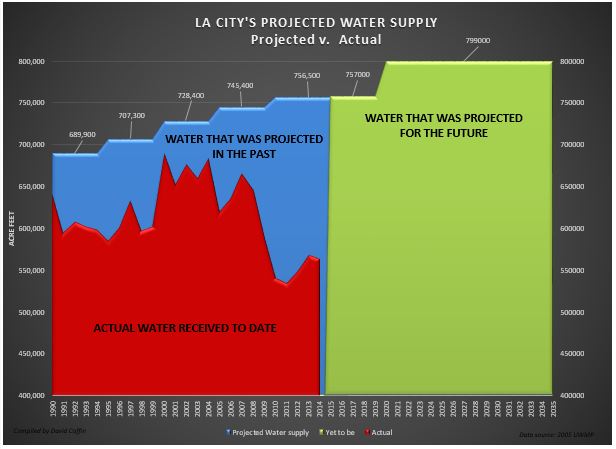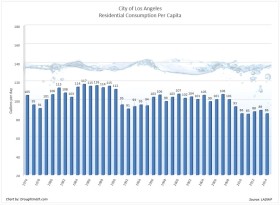City of Los Angeles Emergency Water Conservation Order regulations prohibit restaurants and other public places from serving water to customers unless they specifically ask for a glass of water. So how much of a reduction of water does this city ordinance make and does it have any practical effect on reducing L.A.'s demand?
 We'll set up an admittedly unlikely scenario where every person 15 years and older in the City of Los Angeles goes out to eat in a 'sit-down restaurant' every other week and has a 16 ounce glass of water served to them. The 2010 US Census tells us there are 2,956,181 people in the city that fall into that age group.
We'll set up an admittedly unlikely scenario where every person 15 years and older in the City of Los Angeles goes out to eat in a 'sit-down restaurant' every other week and has a 16 ounce glass of water served to them. The 2010 US Census tells us there are 2,956,181 people in the city that fall into that age group.
The size of the average glass is probably on the big side, the number of patrons and frequency of eating out is probably a bit high side, but over estimating the demand created by serving water is better than downplaying it for the purpose of this article.
Under this scenario, restaurants would serve about 9.6 million gallons a year. A little more if we add washing the glasses but again, it's highly unlikely L.A. City restaurants with 'waited' tables are seeing 77 million patrons a year.
While 9.6 million gallons sounds like a lot, in the larger picture it's just 29 Af/y in a city whose historical demand is over 620,000 Af/y or 202 billion gallons. I'll set aside the meaningless Olympic size swimming pool comparisons that are often made in the media to describe water volume and instead describe what the reduction means in a more practical way:
- 29 Af/y is roughly the amount of water 325 people would use over a period of one year in a city of 4 million.
- 29 Af/y would provide only 9 percent of the 1,444 unit SOLA project projects demand that the LADWP recently recommended for approval.
- 29 Af/y is enough to support only about 89 average single family residential units for one year in a city with over 627,300 units.
- 29 Af/y is enough to support only about 140 average multi-family residential units for one year in a city with over 764,400 units.
So how much is saved? None really. The restriction on serving water to restaurant patrons has no practical effect on reducing demand in a city whose demand continues to grow on a daily basis. The restriction hasn't helped reduce the city's deficit since it was imposed in 2007. In fact, the deficit has deepened in spite of it. This restriction in the city ordinance is merely a legal reminder that the city has been operating under a water deficit for the last eight years.
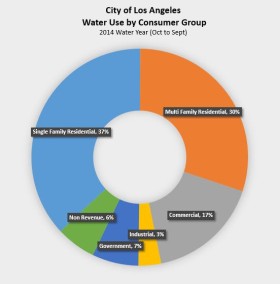
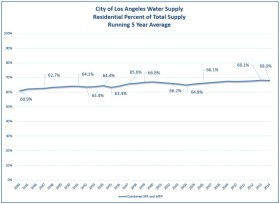
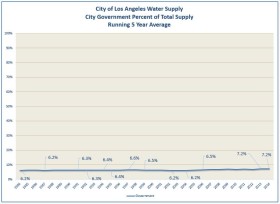


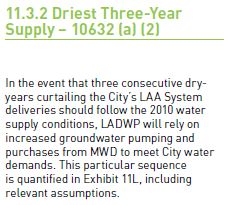
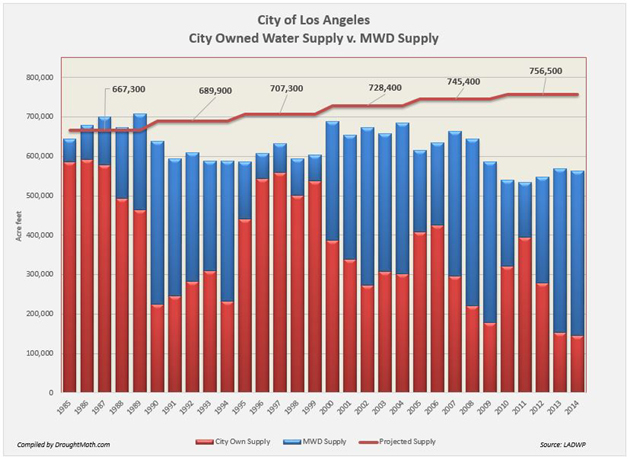
 The main beneficiary of the reduced demand would be the Metropolitan Water District since the city would be buying less water from the agency each year. If the MWD could store this water and build up reserves that would be a good thing for all. However it will most likely will be a combination of storing some of the water and selling the rest to its other member agencies.
The main beneficiary of the reduced demand would be the Metropolitan Water District since the city would be buying less water from the agency each year. If the MWD could store this water and build up reserves that would be a good thing for all. However it will most likely will be a combination of storing some of the water and selling the rest to its other member agencies.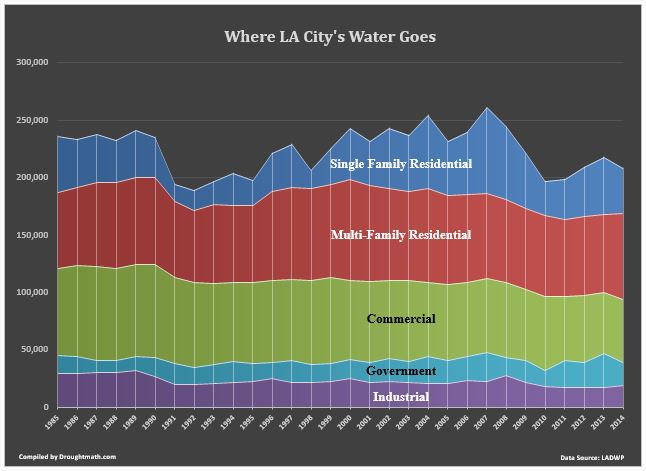 *Supply shown in 'water years' (October thru September).
*Supply shown in 'water years' (October thru September). 